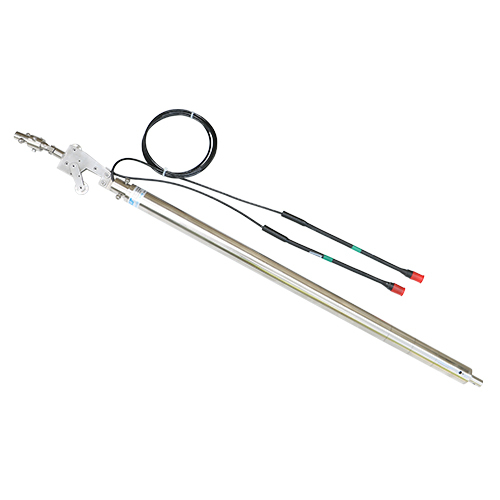SETTLEMENT MONITORING
3D Settlement with Inclination Monitoring System
This is an in-place 3D inclinometer with settlement (IPIS) system is used wherever lateral movement along with settlement/heave is to be monitored in a borewell or on a structure. It finds wide application in the measurement of lateral movement and settlement in soil, earthworks, slopes or structures like retaining/diaphragm walls, embankment, deep foundations or dams etc. It is also very useful in monitoring landslide areas.

Specifications
IPIS is designed to provide significant quantitative data on the magnitude of lateral movement along with settlement or heave and its variations with time. It also provides the pattern of deformation, zones of potential danger and effectiveness of construction control measures undertaken. Its data logging and real-time monitoring feature help to provide early warning in case of failures.
The IPIS system consists of a string of probes positioned inside the inclinometer casing in a continuous array to span the movement zone. Each probe basically comprises of a high accuracy biaxial MEMS sensor to monitor inclination or lateral movement (X-Y) and a contactless magnetic sensor to monitor settlement or heave (vertical movement-Z), housed in a waterproof stainless steel enclosure.
These sensors measure the tilt and settlement in successive segments to accurately monitor a change in the profile (x-y-z) of the inclinometer casing. The real advantage of IPIS is that it allows online monitoring of transverse movement as well as settlement using the same borehole/gauge well. This was not possible until now using presently available instruments.
| Probe | Biaxial MEMS sensor (monitor X-Y); contactless magnetic sensor (monitor Z); with SDI-12 digital interface |
| Measuring range | ± 15° (X-Y), 100 mm (Z) |
| Accuracy1 | ± 0.1% fs |
| Temperature range | -20°C to 80°C |
| Output | SDI-12 digital (serial) output |
| Speed | Speed: 1200 bits/sec |
| Supply operating range | 12 – 16 V; Separate battery pack (power supply) required of ~15 V |
|
1tested under laboratory Magnetic probe with cable reel assembly |
|
| Length ‘L’(m) | 30, 50, 100, 150, 200, 300 (Metric) with resolution 1 mm |
| Length ‘L’(ft) | 50, 100, 150, 300, 500 (Imperial) with resolution 0.01 in |

